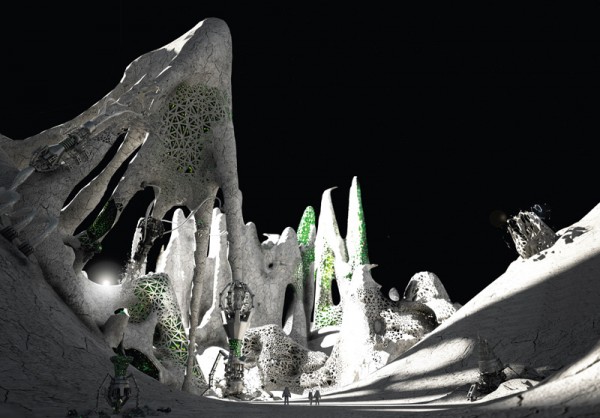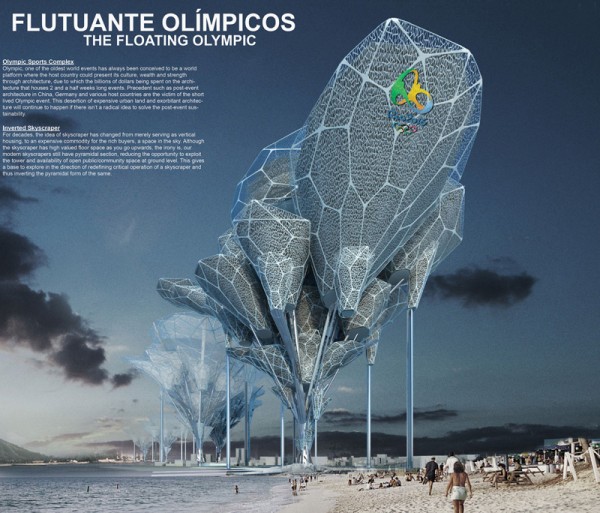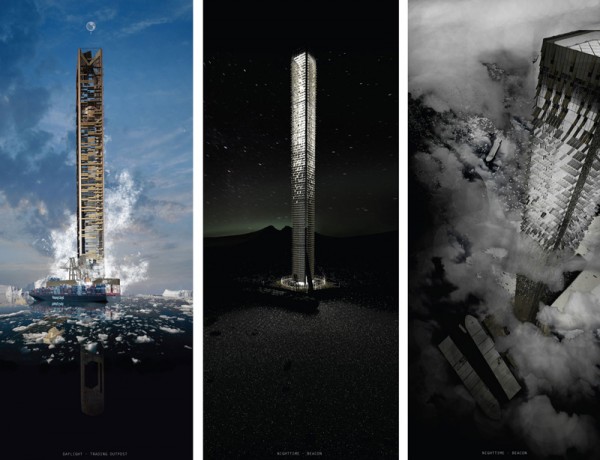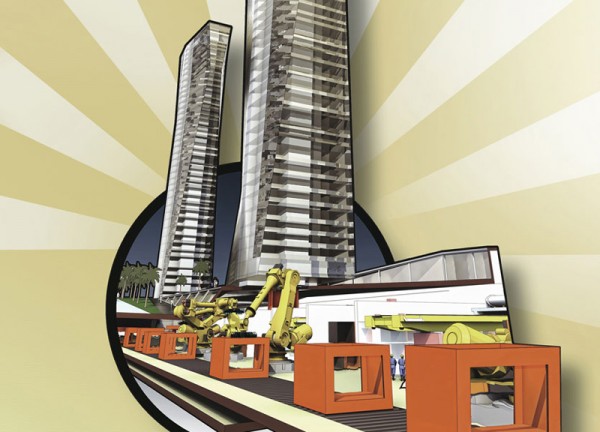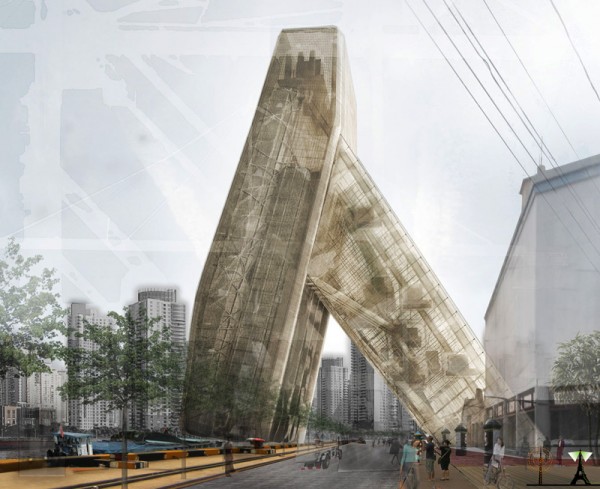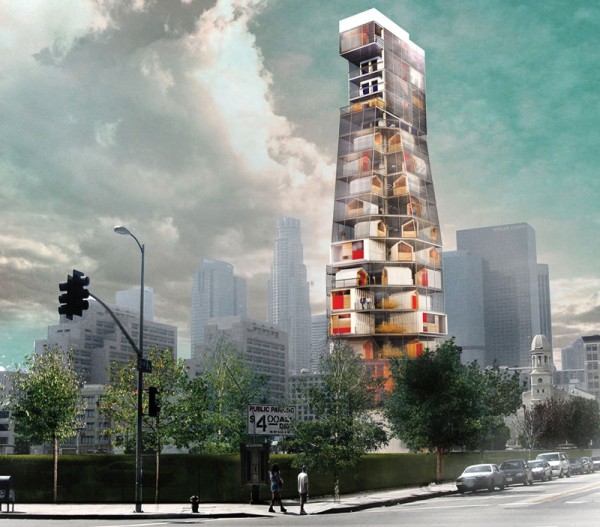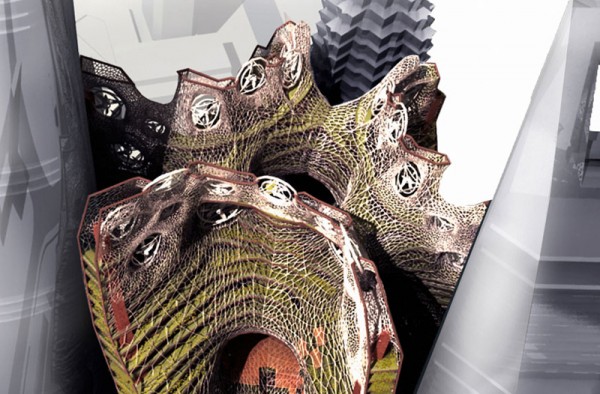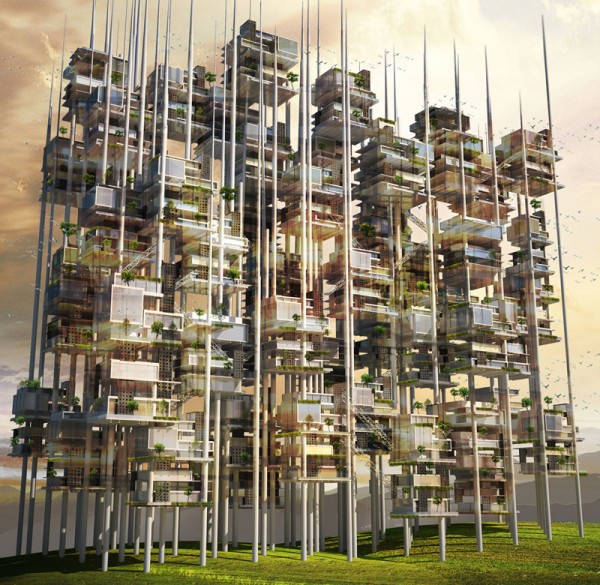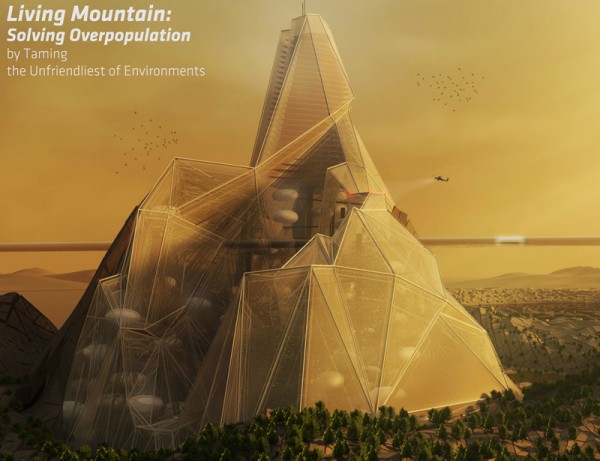Honorable Mention
2011 Skyscraper Competition
Luis Quinones
United States
In challenging the typology of a skyscraper this proposal considers an alternative set of criteria to reexamine habitation, construction, and organizational logic. In examining our global trajectory resulting in issues of overpopulation and depletion of natural resources, this project proposes a developmental shift away from the Earth. The chosen site for this project is on the Shackleton Crater Rim on the South Pole of the Moon.
The Moon was chosen as a testing ground for its ability to depart from the traditional constraints we find on Earth. There are limitations, such as low gravity, non-existent weather, and an abundance of unexploited natural resources such as large traces of frozen water and hydroxyl gases. These are particularly useful if combined, with the use of Regenerative Fuel Cells, where the process of electrolysis is proposed as means of sustaining energy and life by extracting the hydrogen and oxygen molecules from the water. In order to maximize solar gain due to the low oblique angle of the Sun, the skyscraper is the optimal building typology. However, this verticality is not solely expressed above the lunar surface. Instead a nested verticality of embedded towers deep below the surface provides protection from radiation, meteor impacts, and temperature differentials. Read the rest of this entry »

